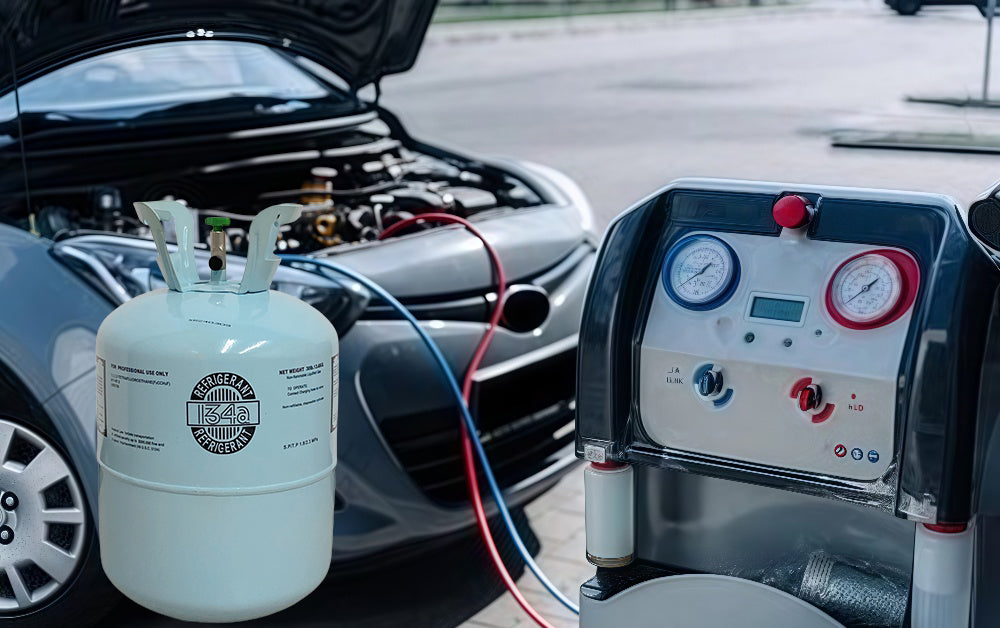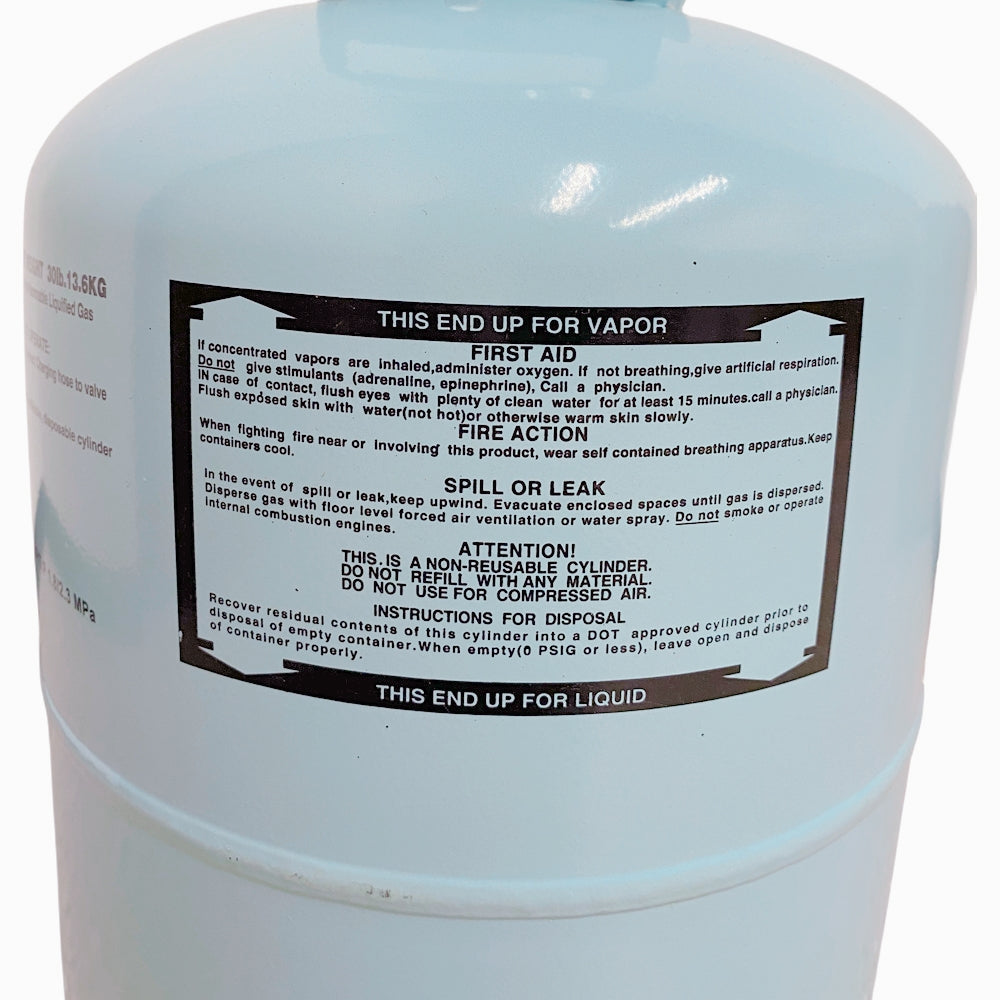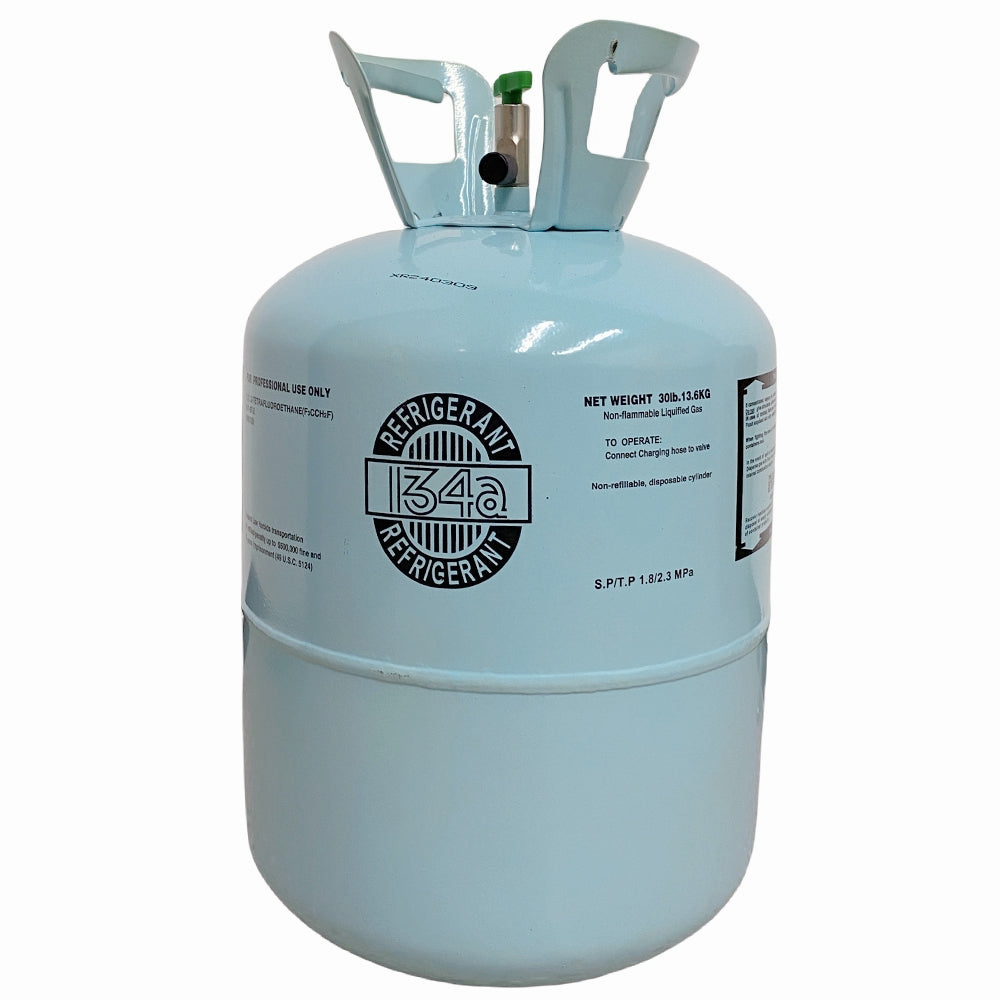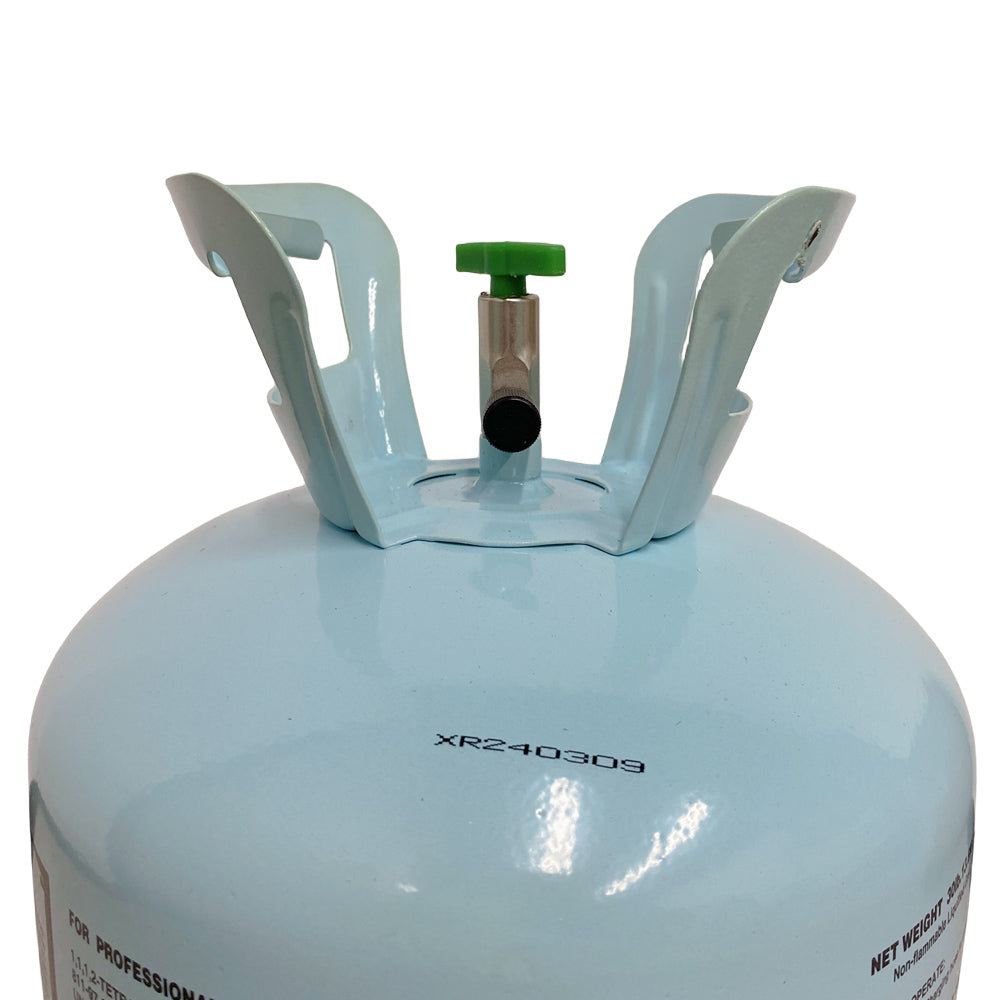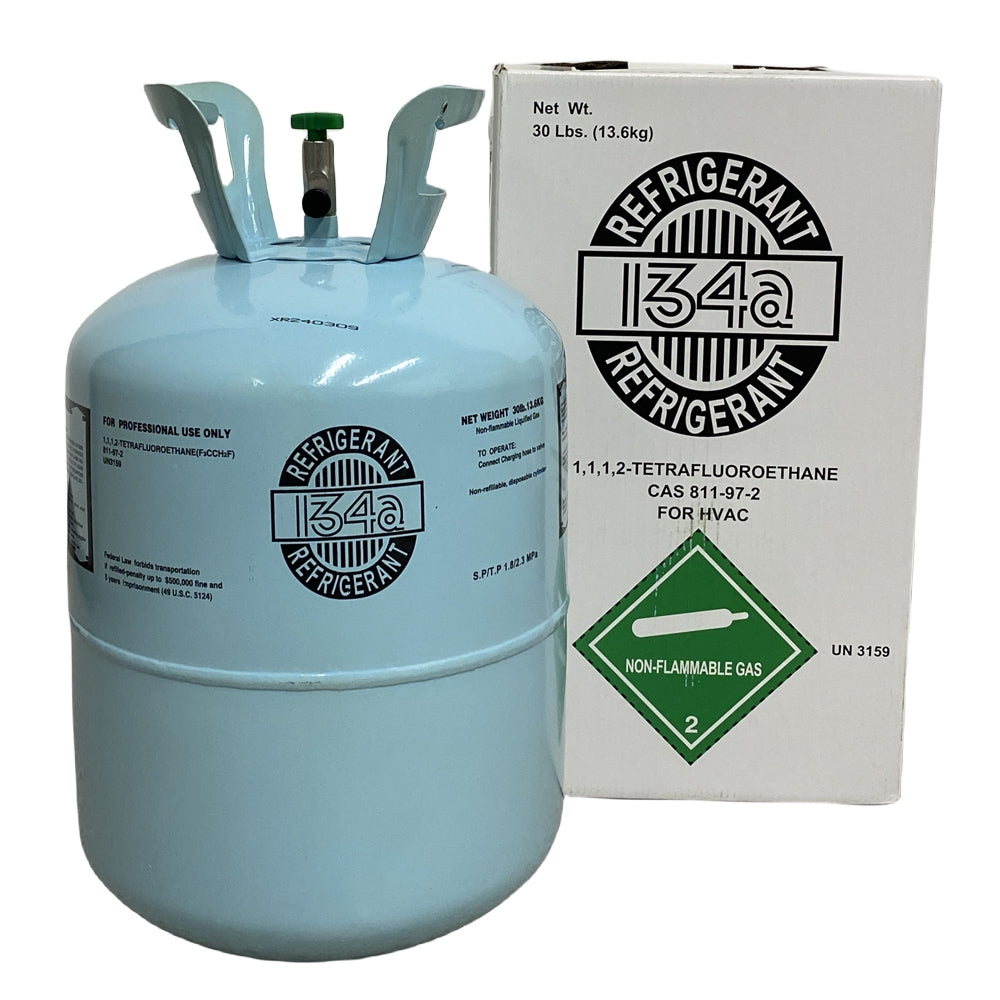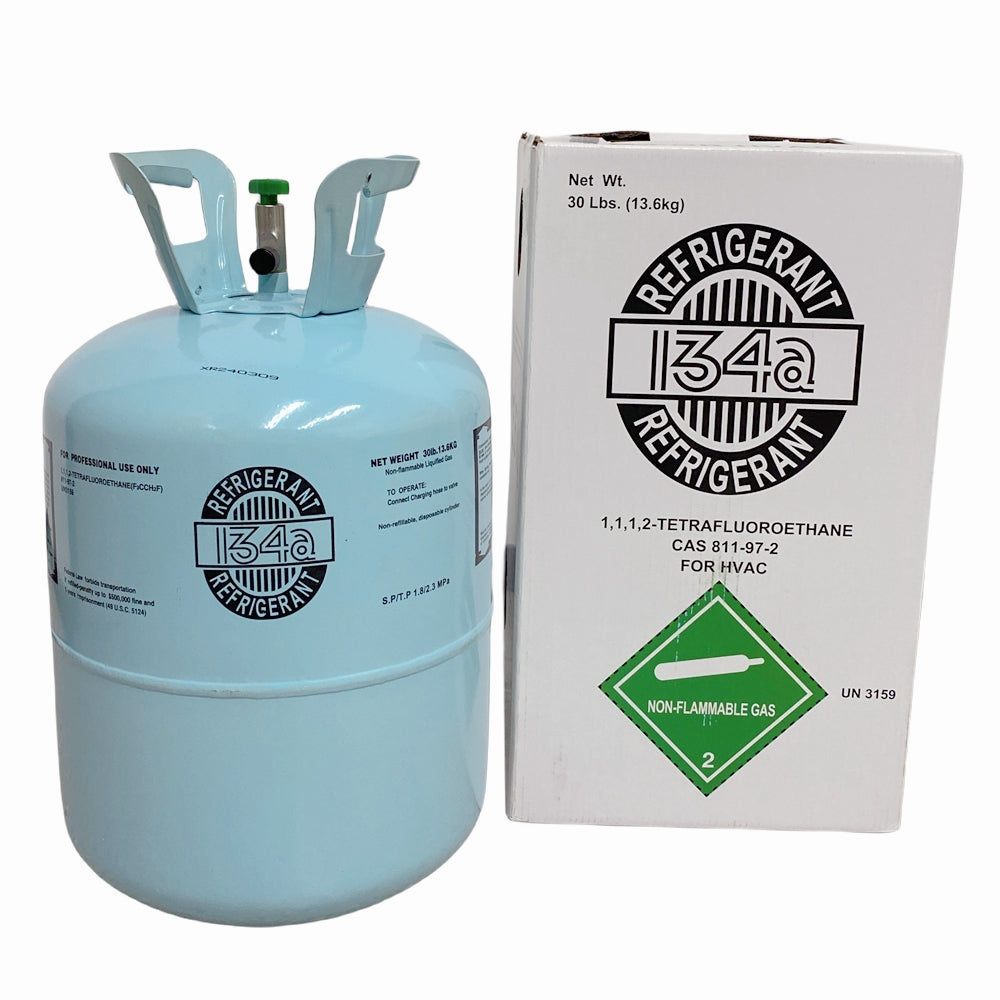Introduction: WhyR-134aHas Been a Longstanding Favorite
R-134a (1,1,1,2-Tetrafluoroethane) has been a trusted refrigerant for decades, particularly in automotive air conditioning, domestic refrigerators, and light commercial cooling systems. Introduced as a replacement for the ozone-depleting R-12, R-134a offers a good balance of performance, safety, and availability. But with increasing global pressure to reduce greenhouse gas emissions, the industry is now facing a shift toward low-GWP alternatives. So, how does R-134a hold up today, and where does it go from here?
This guide will explore:
✔ Chemical composition & environmental profile
✔ Advantages over older refrigerants
✔ System compatibility & usage
✔ Energy efficiency & reliability
✔ Future alternatives & regulatory direction
1. What Is R-134a? (Chemical Composition &Environmental Impact)
A. Chemical Makeup
R-134a is a single-component HFC refrigerant. It replaced CFC-12 in the 1990s due to its zero ozone depletion potential.
· Molecular formula: C₂H₂F₄
· Boiling point: –26.3°C
· Non-flammable, non-toxic, and chemically stable under normal use
B. Environmental Impact
While R-134a is ozone-friendly, it has a moderately high Global Warming Potential (GWP = 1,430). This has prompted a push for phase-down under global agreements like the Kigali Amendment and EU F-Gas Regulation.
Key Takeaway:
✅ No ozone damage (ODP = 0)
⚠ Moderate-to-high GWP (1,430) – Facing gradual phaseout globally
2.R-134a Compared to Other Refrigerants
A. R-134a vs. R-12 (CFC predecessor)
|
Feature |
R-134a |
R-12 |
|
Ozone Depletion Potential |
0 |
1.0 (Very high) |
|
Global Warming Potential |
1,430 |
10,900 |
|
Flammability |
Non-flammable |
Non-flammable |
|
Efficiency |
Comparable |
Baseline |
|
Availability |
Very high |
Banned worldwide |
Why R-134a Wins:
✔ Safer for the ozone layer
✔ Readily available and cost-effective
✔ Compatible with modern systems
B. R-134a vs. Newer Alternatives (R-1234yf, R-513A)
|
Refrigerant |
GWP |
Flammability |
Efficiency |
Comments |
|
R-134a |
1,430 |
Non-flammable |
Baseline |
Widely used, phasing out |
|
R-1234yf |
4 |
Mildly flammable (A2L) |
Similar |
Standard in modern vehicles |
|
R-513A |
631 |
Non-flammable |
Slightly lower |
Good drop-in retrofit option |
Takeaway:
✔ R-1234yf leads for environmental safety but needs A2L certification
✔ R-513A offers a safer non-flammable alternative for commercial systems
3. Key Benefits of R-134a
A. Reliable Performance
· Consistent pressure-temperature curve makes it predictable and stable
· Efficient for medium-temperature applications like refrigerators and chillers
B. Safety and Availability
· Non-toxic and non-flammable – safe for residential and commercial use
· Globally produced and supported
· Compatible with standard HFC tools and components
C. Regulatory Compliance (until now)
· Approved for use in existing systems in many countrie
· Supported with available spare parts, POE lubricants, and trained technicians
4. System Compatibility & Maintenance Tips
R-134a is compatible with systems specifically designed for HFC refrigerants and is typically charged with POE (polyolester) oil.
System Requirements
✔ Standard copper tubing and components
✔ POE oil compatibility – do not mix with mineral oil
✔ Requires dedicated R-134a tools, gauges, and recovery units
Maintenance Best Practices
· Leak checks are critical due to global warming concerns
· Always use clean, dry POE oil to avoid system contamination
· Ensure proper vacuuming and charging procedures to prevent moisture issues
5.The Future of R-134a: Gradual Phaseout
Due to its relatively high GWP, regulations are phasing down R-134a in many applications, especially in:
· New automotive AC systems (replaced by R-1234yf)
· New commercial refrigeration equipment (replaced by R-513A or CO₂)
· Some aerosol and foam applications
Timeline:
• 2025+ – Bans on R-134a in new passenger vehicles in EU, US, and Japan
• 2030+ – Restrictions on production and use in developed countries
• Retrofit support will continue where allowed, using reclaimed refrigerant
Final Verdict: Is R-134a Still a Good Choice?
✅ Yes, for existing systems – Reliable, available, and well-understood
⚠ No, for new installations – Alternatives with lower GWP are preferred
Recommendation:
• If you're maintaining an older R-134a system, continue using it under local guidelines
• For new designs, transition to R-1234yf or R-513A to ensure regulatory compliance and long-term sustainability
FAQs about R-134a Refrigerant
Q: Is R-134a banned in 2025?
Not completely. It is banned in new systems in some regions, especially cars, but can still be used in existing systems and service applications.
Q: Can I retrofit an R-134a system?
Yes, with compatible alternatives like R-513A, but always consult a certified technician for oil changes and component checks.
Q: Why isn’t R-134a environmentally preferred anymore?
Despite having zero ozone depletion, its GWP of 1,430 contributes to climate change, prompting regulations to favor lower-GWP options.

